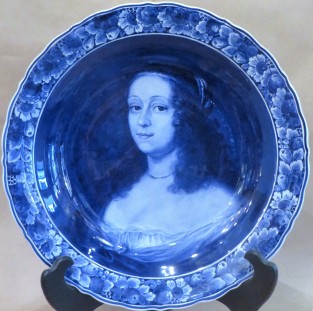De Koninklijke Porceleyne Fles is de enige overgebleven van de 32 zeventiende eeuwse aardewerkfabrieken in Delft. Het staat bekend om zijn hoge kwaliteit Delfts aardewerk en is zonder onderbreking al 350 jaar actief.
Delfts blauw werd populair in Nederland in de vroege 17e eeuw toen de VOC het blauw beschilderde Chinese porcelein introduceerde. De Porceleyne Fles startte in 1653 toen David Antonisz van de Pieth zijn huis in een aardewerkfabriek omvormde. Door de hoge vraag naar het product groeide Delft met 32 fabrieken, die door de Chinese burgeroorlog van 1640 tot 1670, extra markt zagen ontstaan en de kwaliteit verhoogden.
Echter, vanaf 1840 was De Porceleyne Fles de laatst overgebleven fabriek uit de 17e eeuw. Door afgenomen innovatie en Engelse concurrentie, onder meer van Steengoed zoals Wedgwood, nam de vraag af. In 1876 blies Joost Thooft nieuw leven in de fabriek, vanuit een persoonlijke interesse in Delfts blauw, om de glorietijd van de 17e eeuw te laten terugkeren. Hij verzamelde belangrijke ontwerpers en schilders, zoals Leon Senf, die er van 1878 tot 1930 werkzaam was. Ook centraliseerde Thooft de verschillende locaties tot één fabriek in 1916. Sinds 1919 draagt De Porceleyne Fles het predicaat ‘Koninklijk’.





